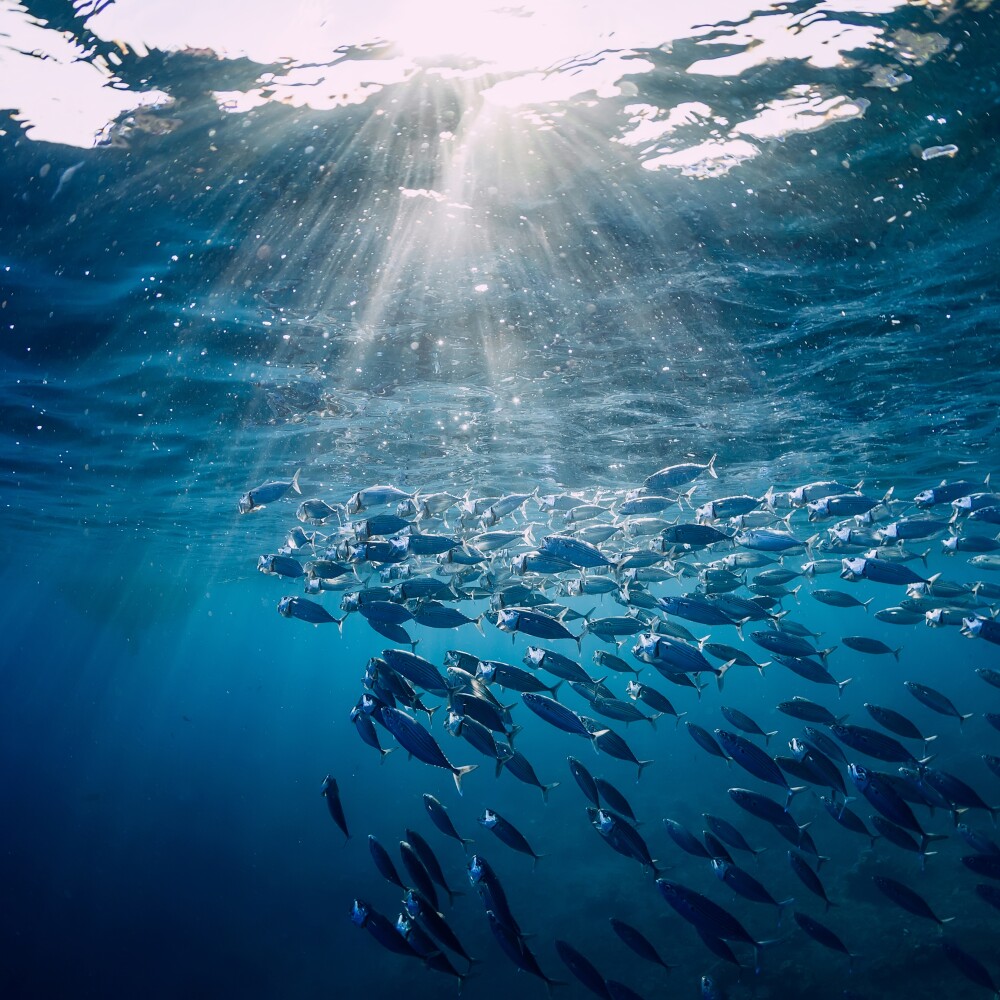Over the past two years, Global Fishing Watch and founding partner SkyTruth have developed the first-ever global, public database of fishing vessels involved in transshipment, measured the scale of transshipment worldwide for the first time, and used transshipment data to shed light on illicit behavior.
What is transshipment and why is it important?
While most consumers may have never heard of transshipment, they have probably eaten seafood caught, transported and brought to market through the process. Transshipment occurs when two or more vessels meet up at sea to transfer catch and is a vital part of the economics of global fisheries.
Imagine you are a fisher on the high seas, more than 200 miles from land. You have just filled your hold with fish. It will take a week traveling at full-steam to the nearest port and another week to return, two weeks to offload one catch. The further you travel, the more you spend on fuel, the longer it takes for your fish to get into port and the less time you can fish. It is time-consuming and expensive. That’s why transferring catch at sea to vessels with huge refrigerated holds enables the fishing vessels to keep fishing, and leaves the landing of the fish to the refrigerated vessels or “reefers”, via transshipment.
Transshipment saves time and increase profits for fishers, but often it occurs out of sight and in poorly regulated waters, making it difficult to monitor and manage. Because transshipment allows for multiple vessels to meet, it becomes harder to determine who actually caught the fish once it reaches port, increasing the possibility that illegal and legal catch will be mixed. It’s often associated with illegal, unreported, and unregulated (IUU) fishing, drug smuggling, forced labor and other human rights abuses. As a pathway for illegal catch to enter the global market, transshipment prevents an accurate measurement of the amount of marine life being taken from the sea. It obscures the seafood supply chain from hook to port and deters efforts to manage fisheries sustainably.
Just two years ago, useful aggregated public data on transshipment was almost nonexistent, and little was known about its global scale or patterns. In 2016, SkyTruth and Global Fishing Watch, with support from the Walton Family Foundation, decided to take action to bring unprecedented transparency to transshipment.
What are the next steps to help manage this elusive process?
As a first step to understanding global transshipment activity, we developed a public global database of transshipment vessels. By combining data from vessel registries and internet investigations, and by applying machine learning techniques, we identified roughly 680 potential transshipment vessels.
Next, we measured the scale of potential transshipment encounters globally by analyzing over 30 billion vessel tracking signals - known as Automatic Identification System (AIS) messages - to reveal, for the first time, who is likely transshipping and where it’s being done. Nearly all large transshipment vessels carry AIS, making it possible to identify all locations where they loiter at sea long enough to receive a transshipment, or locations where two vessels (a transshipment vessel and a fishing vessel) are in close proximity long enough to transfer catch, crew or supplies.
We found that roughly half of transshipments occur on the high seas. Transshipment is common in areas with limited monitoring and almost half of global transshipments involve vessels registered to flags of convenience (countries with reduced oversight and limited connection to the vessel). These results exposed the need for global collaboration to improve management, particularly given the sustainability and human rights concerns associated with transshipment.
How will transparency improve transshipment?
We are only just beginning to see the true impact of this unprecedented dataset, but, already, it has been used to identify vessels potentially involved in catching sharks that were illegally transported through the Galapagos and in a scientific paper with our research collaborators at Dalhousie University, identifying those fisheries that transship most often. Our partners at Oceana also analyzed the data to identify patterns of likely transshipping, top ports visited by these vessels, and vessels at sea for more than 500 days. Additionally, our models have been incorporated into recent efforts to estimate the costs and profitability of high seas fishing, a set of potential transshipments have been incorporated as a layer within the Global Fishing Watch public map and our work has supported Greenpeace investigations into human rights abuses within fishing fleets.
What’s next?
Next steps include extending our analyses to include refueling vessels (also known as bunker vessels) which play a critical role in supporting fishing on the high seas. Combining refueling and transshipment events with data on vessel owners, operators and flag states will enable us to map the social network at sea. By making our data and methods open source, we also hope to encourage others to further investigate transshipment.


